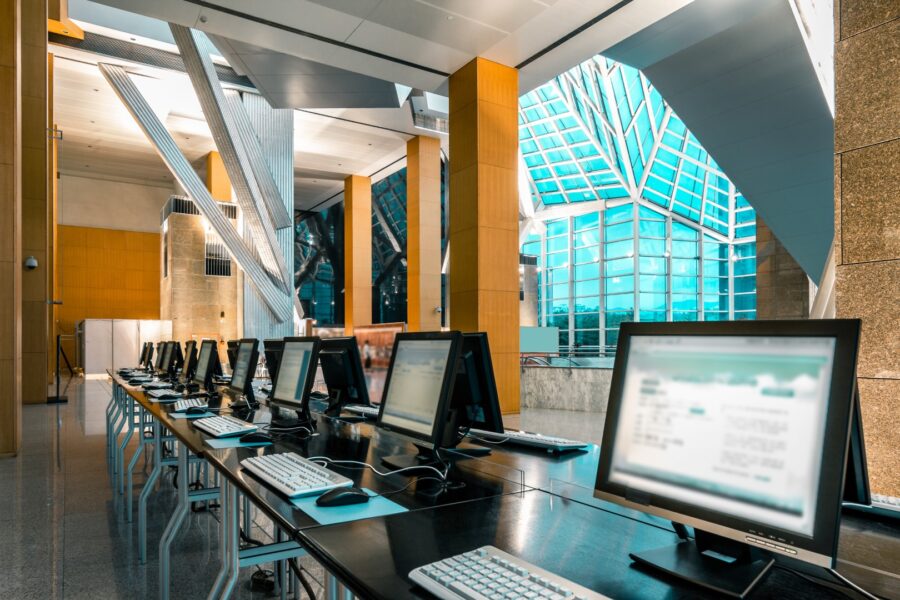In the restaurant business, every detail matters. From the color of your walls to the design of your menus, consistency across all aspects of your establishment helps create a memorable and cohesive dining experience. When the small details of your restaurant match the aesthetic of both the exterior and interior, they elevate your brand and leave a lasting impression on customers. This article looks at how to achieve this harmony.
1. Align Your Branding with Your Concept
The foundation of consistency is a clear and well-defined brand identity. Whether your restaurant exudes modern minimalism, rustic charm, or upscale elegance, every detail—from signage to silverware—should reflect that concept.
Top Tips:
- Use your logo, fonts, and colors consistently across your website, menus, and décor.
- Choose materials and textures that resonate with your theme, such as wood for a rustic eatery or polished metals for a sleek, contemporary vibe.
2. Coordinate Exterior and Interior Design
The exterior of your restaurant sets the stage for what diners can expect inside. A cohesive design ensures a seamless transition from the outside in, creating a unified experience. This means you need to be using similar color palettes for your exterior signage and interior walls. You can incorporate design elements like lighting, plants, or textures that mirror your interior’s ambiance.
3. Curate Tableware and Décor
Small details like table settings, napkins, and centerpiece décor should align with your theme. These elements are not just functional but also contribute to the overall atmosphere. For example, rustic restaurants might feature mason jars and wooden serving boards, while high-end establishments may opt for fine china and crisp, white linens.
4. On-Brand Uniforms for Staff
Uniforms are a vital yet often overlooked element of restaurant branding. They not only serve practical purposes but also contribute to the overall aesthetic, tying together the visual identity of your establishment. As an example, a trendy café might outfit staff in casual branded t-shirts and denim aprons, but a fine-dining restaurant could choose tailored vests or elegant chef coats in muted tones.
Tips for Choosing Uniforms:
- Select colors and designs that complement your restaurant’s palette.
- Prioritize functionality with durable, easy-to-clean fabrics.
- Provide options for different roles, such as aprons for servers and chef coats for kitchen staff.
- Stock spare uniforms to maintain consistency during busy shifts or unexpected staffing changes.
You can find a range of culinary uniforms from Chef Works Inc in a style and color that works for your branding.
5. Customize Menus and Signage
Menus and signage are extensions of your branding. Ensure the fonts, colors, and materials used match the overall aesthetic of your restaurant. You could consider digital menus or boards for a modern touch in tech-forward establishments or opt for handwritten chalkboards in casual settings.
6. Pay Attention to Music and Lighting
Music and lighting are subtle yet powerful details that set the mood for your restaurant. Select playlists and lighting fixtures that enhance the dining experience while staying true to your brand. If you want to create a cozy, romantic atmosphere, opt for warm, dim lighting, but for a vibrant, family-friendly café, you’ll want bright, natural light.
7. Match Staff Tools and Accessories
Even small tools and accessories, such as order pads, trays, and utensil holders, can reflect your brand. Just make sure you invest in high-quality, visually appealing options that complement your overall aesthetic.
Final Thoughts
Achieving harmony between your restaurant’s exterior, interior, and small details ensures a cohesive, immersive experience for your customers. On-brand uniforms, coordinated décor, and consistent design choices work together to solidify your identity and make your restaurant memorable. When every detail is thoughtfully aligned, it not only enhances your brand but also creates a seamless and enjoyable experience for your guests.
Discover more from Futurist Architecture
Subscribe to get the latest posts sent to your email.



